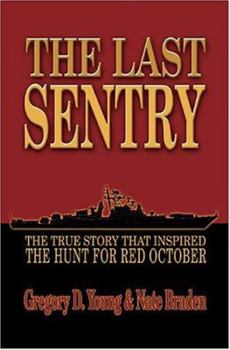Last Sentry: The True Story That Inspired the Hunt for Red October
Providing inspiration for Tom Clancy's The Hunt for Red October , the 1975 mutiny aboard the Soviet destroyer Storozhevoy (translated Sentry) aimed at nothing less than the overthrow of Leonid... This description may be from another edition of this product.
Format:Hardcover
Language:English
ISBN:1591149924
ISBN13:9781591149927
Release Date:October 2013
Publisher:US Naval Institute Press
Length:250 Pages
Weight:0.70 lbs.
Dimensions:0.9" x 6.4" x 9.3"
Customer Reviews
3 ratings
An Essential History to Understanding the Storozhevoy Incident
Published by Thriftbooks.com User , 15 years ago
For anyone interested in trying to understand the events of November 1975, when the Soviet frigate Storozhevoy was sized by its political officer, Captain Third Rank Valery Sablin, The Last Sentry is critical. Essentially the book is a detailed biography of the young officer's life. For anyone familiar with the literature available on the subject, there is no way to really understand the seizure without understanding Sablin. And the authors, Gregory Young and Nate Braden, both with military backgrounds, do what good historians do. They present an objective story and let the conclusions perennially emerge. Sablin is painted with broad strokes. He had taken over his ship believing that through broadcasting a prepared speech, the Russian population would be driven to action; that collectively, they would rise up and overthrow the existing government headed by Leonid Brezhnev, a leader who Sablin perceived as perverting the purity of Communism's utopian goals. Is Sablin a complex personality, an ideological intellectual? Is he a fanatic, an obsessed theoretician, driven by unrealistic fantasies and personal demons? Or is he simply a flawed human being? Young and Braden let the reader decide. One thing, however, is clear and a central element of the story - Sablin is a committed Communist. For such staunch adherents, Young and Braden observe, "Communism was not necessarily antimaterialist in the sense that it rejected temporal pleasures, but it did equate capitalism with greed and decadence . . . Sablin's faith in its stated aim of redistributing wealth for the common good never wavered." And for good reason. After having graduated from the Frunze Military Academy, the Soviet equivalent of Annapolis, Sablin completed a four year degree at the Lenin Military Political Academy in June 1973. There, he was immersed in Marxist-Leninist philosophy; doctrines that for the proletariat, held the key to global stability and societal equality. In understanding this, before reading The Last Sentry, it would probably be beneficial to have read Karl Marx's Das Capital. While disagreeing with the actual "benefits" of Socialism, one could not help but be horrified at the ravages of child labor and the abused and mistreated workers who so pitifully endured throughout the capitalist world at the time when industrialization was taking hold. To Sablin, Communism represented salvation. Thus, the broad brush strokes are spread upon the canvas. In contemplating Sablin, Young and Braden find that "[t]he gap between an idealist's dreams and what he eventually has to accept in adulthood varies from individual to individual." Indeed, at the political academy, Sablin appeared to have been already developing his disillusion with the Soviet system and formulating a response - a response that would eventually culminate on the bridge of the Storozhevoy. While at the school, Sablin had written, "My studies at the academy finally convinced
Trouble in Utopia
Published by Thriftbooks.com User , 19 years ago
During most of the Cold War, the Soviet military was perceived as a highly effective fighting force with motivated servicemen and modern equipment. This book tells the other side of the story by describing a mutiny that was organized by a political officer looking for a public platform to denounce the corruption of the Brezhnev regime and foster a change towards a more idealistic communist society. It provides a good overview of life in the Soviet Navy and morale problems caused by poor food, very poor housing, and abusive hazing within the enlisted ranks. It also provides insight into how government paralysis over accepting criticism result in only two of the crew being criminally charged for the offense. Finally, the book discussed the ramifications of the mutiny with respect to Soviet politics and the perception of the Soviet military by the Western powers. The writing style is straightforward but very intelligible and the subject matter is very well handled in terms of scope and detail.
A True "Red October"
Published by Thriftbooks.com User , 19 years ago
The Soviet destroyer "Storozhevoy" (Sentry in English) was one of the Soviet Union's most modern ships in 1975. The political officer on board was one of the rising stars in the fleet. A dedicated communist he became convinced that the Government in the Soviet Union had deviated away from true communism. His solution was to get the crew of the ship to stage a mutiny where he was to launch a revolution to get rid of the current leadership and restore the Soviet Union to its original comunist goals. Needless to say, the rest of the Soviet Navy did not take kindly to this sort of thing and neither did the KGB. Elements of the Soviet Navy attacked the "Storozhevoy," stopped it, boarded it, and arrested everyone. This incident was the trigger for Tom Clancy to write "The Hunt for Red October." In one point in the movie Jack Ryan is talking to the president. And he mentions this incident, identifying the ship and the political officer. This book isn't as exciting as the "Red October",but then again, it's true. An interesting story to come out of the Cold War.






